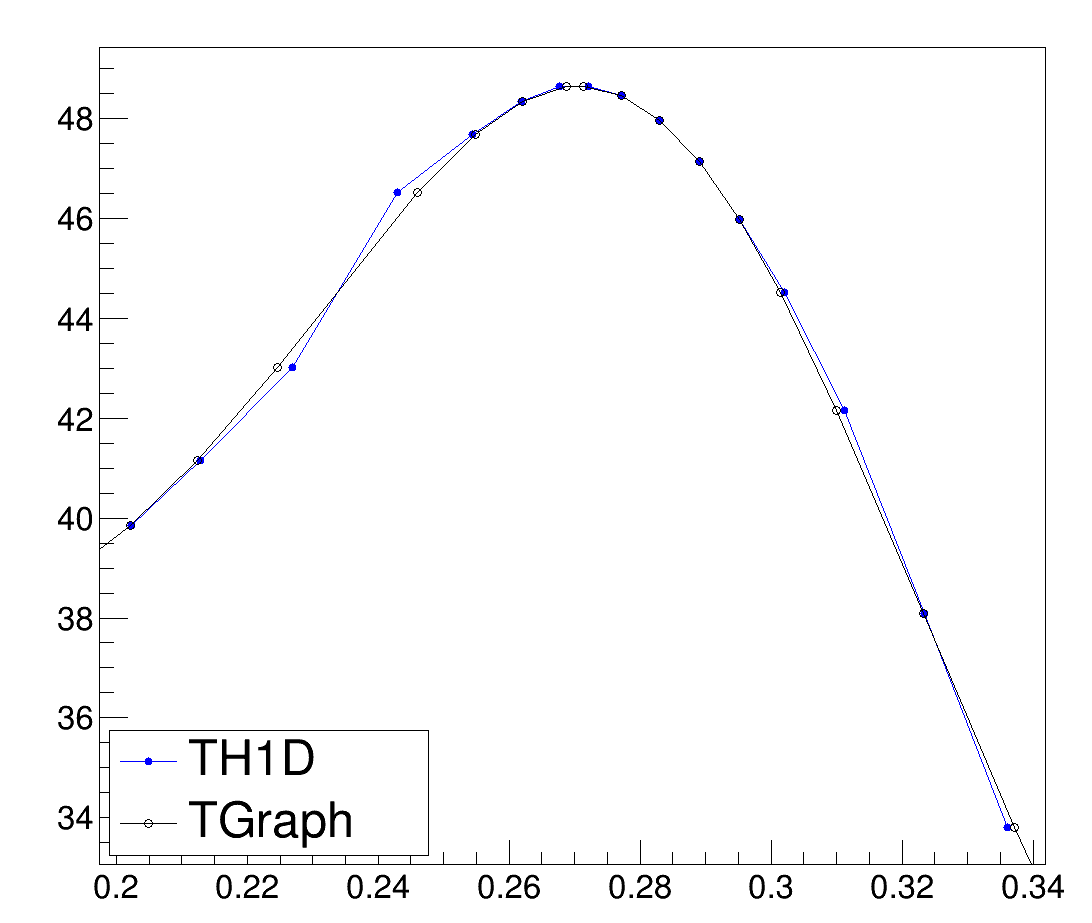ROOT Version: 6.16
Platform: 20.04
Compiler: linuxx8664gcc
Dear co-rooters,
I am trying to convert a TGraph to a TH1D. This is convenient because i can use the TH1 functions later on.
For that I created a function, that accepts a TGraph object, and based on that it creates a binning. Note the the x points of the TGraph are not necessarily equidistant.
Then in my main code I am creating the the TGraph based on an ascii file and I am using the function to construct a TH1D histogram.
The trouble is that in some bins the BinCenter of the histogram is not exactly the same as the x of the TGraph. See the following image for instance.
Here is my code that I compile using .L macro.C++ and execute using oscillations(). Note that I upoaded the .dat as a .zip file.
Any idea on how to fix that?
Thanks in advance!
#include "TH1D.h"
#include "TGraph.h"
#include "TCanvas.h"
#include <vector>
#include <fstream>
#include <iostream>
using namespace std;
TH1D* TGraph_to_TH1D(TGraph* graph) {
if (!graph) {
std::cerr << "Error: Null TGraph pointer!" << std::endl;
return nullptr;
}
int n = graph->GetN();
double *x = new double[(n+1)];
x[0] = graph->GetX()[0] - (graph->GetX()[1] - graph->GetX()[0]) / 2.0;
x[n] = graph->GetX()[n-1] - (graph->GetX()[n-1] - graph->GetX()[n-2]) / 2.0;
for (int i=1; i<n; ++i){
x[i] = (graph->GetX()[(i-1)] + graph->GetX()[i]) / 2.0;
}
TH1D *h = new TH1D("h", "h", n, x);
for (int i=0; i<n; ++i) {
h->SetBinContent(i+1, graph->GetY()[i]);
}
return h;
}
void oscillations() {
// Open the .dat file
std::ifstream infile("235U_MT102_eV.dat");
if (!infile) {
std::cerr << "Error opening file!" << std::endl;
return;
}
// Vectors to store data
std::vector<double> energies, cross_sections;
double energy, cross_section;
while (infile >> energy >> cross_section) {
energies.push_back(energy);
cross_sections.push_back(cross_section);
}
infile.close();
int nPoints = energies.size();
if (nPoints == 0) {
std::cerr << "No data found in file!" << std::endl;
return;
}
// Create a TGraph
TGraph *graph = new TGraph(nPoints, energies.data(), cross_sections.data());
graph->SetTitle("Cross Section vs Energy;Energy (eV);Cross Section (barns)");
TH1D *hist =(TH1D*) TGraph_to_TH1D(graph);
// Draw the histogram and the graph
hist->Draw("histo");
graph->SetMarkerStyle(4);
graph->SetMarkerSize(1);
graph->Draw("PLsame"); // Overlay TGraph on histogram
}
235U_MT102_eV.dat.zip (260.1 KB)
